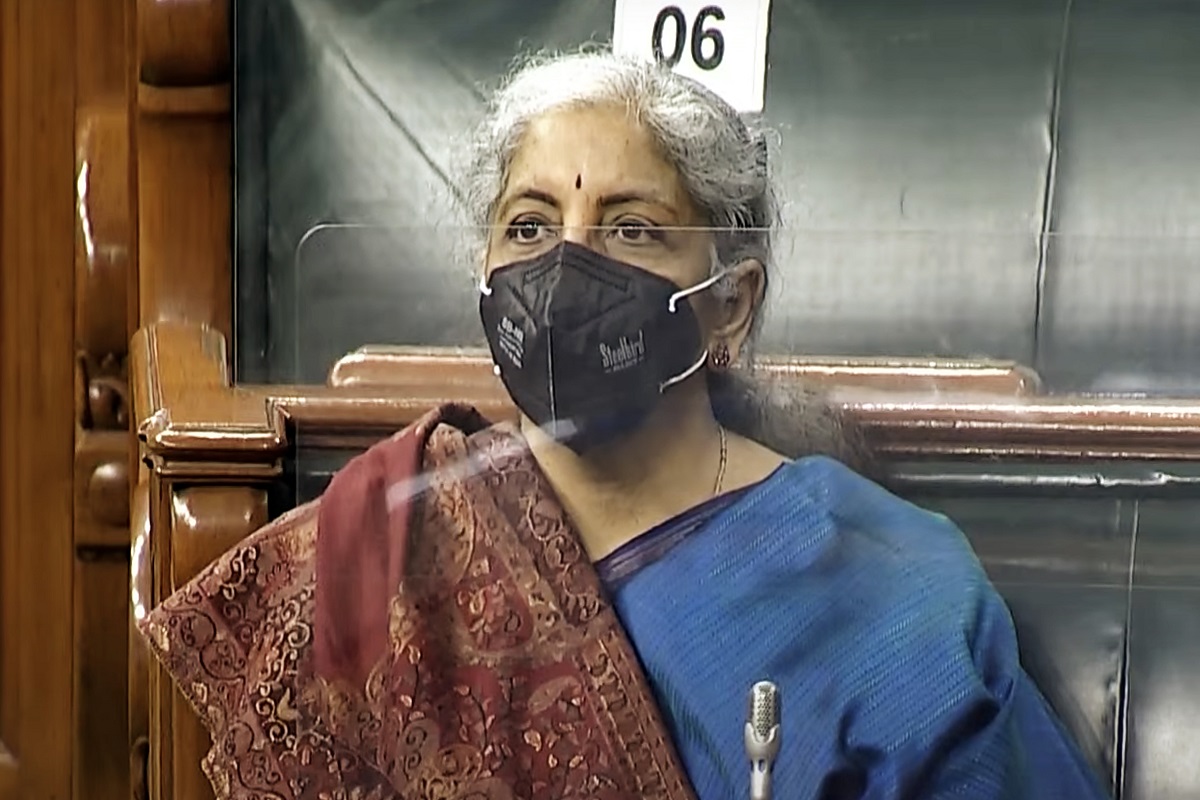44% respondents pay extra fee for preferred seat on plane: Survey
Only 54 per cent of respondents said they received a few free seat options during booking. This leaves many scrambling for free seats or are forced to pay extra.
As per IMF’s latest World Economic Outlook projections, India’s real GDP is projected to grow at 9 percent in 2021-22 and 2022-23 and at 7.1 percent in 2023-2024, which would make India the fastest-growing major economy in the world for all 3 years;

(ANI Photo)
Union Finance Minister Nirmala Sitharaman today presented the Economic Survey 2021-22 in Parliament.
Following are the highlights of the survey on the state of the economy:
–Indian economy estimated to grow by 9.2 per cent in real terms in 2021-22 (as per first advance estimates) subsequent to a contraction of 7.3 per cent in 2020-21;
Advertisement
–GDP projected to grow by 8- 8.5 per cent in real terms in 2022-23;
–The year ahead is poised for a pickup in private sector investment with the financial system in a good position to provide support for the economy’s revival;
–Projection comparable with World Bank and Asian Development Bank’s latest forecasts of real GDP growth of 8.7 per cent and 7.5 per cent respectively for 2022-23;
–As per IMF’s latest World Economic Outlook projections, India’s real GDP is projected to grow at 9 per cent in 2021-22 and 2022-23 and at 7.1 per cent in 2023-2024, which would make India the fastest-growing major economy in the world for all 3 years;
–Agriculture and allied sectors are expected to grow by 3.9 per cent; industry by 11.8 per cent and services sector by 8.2 per cent in 2021-22;
–On-demand side, consumption is estimated to grow by 7.0 per cent, Gross Fixed Capital Formation (GFCF) by 15 per cent, exports by 16.5 per cent and imports by 29.4 per cent in 2021-22;
–Macro economic stability indicators suggest that the Indian Economy is well placed to take on the challenges of 2022-23;
–Combination of high foreign exchange reserves, sustained foreign direct investment, and rising export earnings will provide an adequate buffer against possible global liquidity tapering in 2022-23;
–Economic impact of the “second wave” was much smaller than that during the full lockdown phase in 2020-21, though health impact was more severe;
–Government of India’s unique response comprised of safety-nets to cushion the impact on vulnerable sections of society and the business sector, significant increase in capital expenditure to spur growth and supply-side reforms for a sustained long-term expansion;
–Government’s flexible and multi-layered response is partly based on an “Agile” framework that uses feedback-loops, and the use of eighty High Frequency Indicators (HFIs) in an environment of extreme uncertainty;
–The revenue receipts from the Central Government (April to November 2021) have gone up by 67.2 per cent (YoY) as against an expected growth of 9.6 per cent in the 2021-22 Budget Estimates (over 2020-21 Provisional Actuals);
–Gross Tax Revenue registers a growth of over 50 per cent during April to November, 2021 in YoY terms. This performance is strong compared to pre-pandemic levels of 2019-2020 also;
–During April-November 2021, Capex has grown by 13.5 per cent (YoY) with a focus on infrastructure-intensive sectors;
–Sustained revenue collection and a targeted expenditure policy has contained the fiscal deficit for April to November, 2021 at 46.2 per cent of BE; and
–With the enhanced borrowings on account of COVID-19, the Central Government debt has gone up from 49.1 per cent of GDP in 2019-20 to 59.3 per cent of GDP in 2020-21, but is expected to follow a declining trajectory with the recovery of the economy.
Advertisement